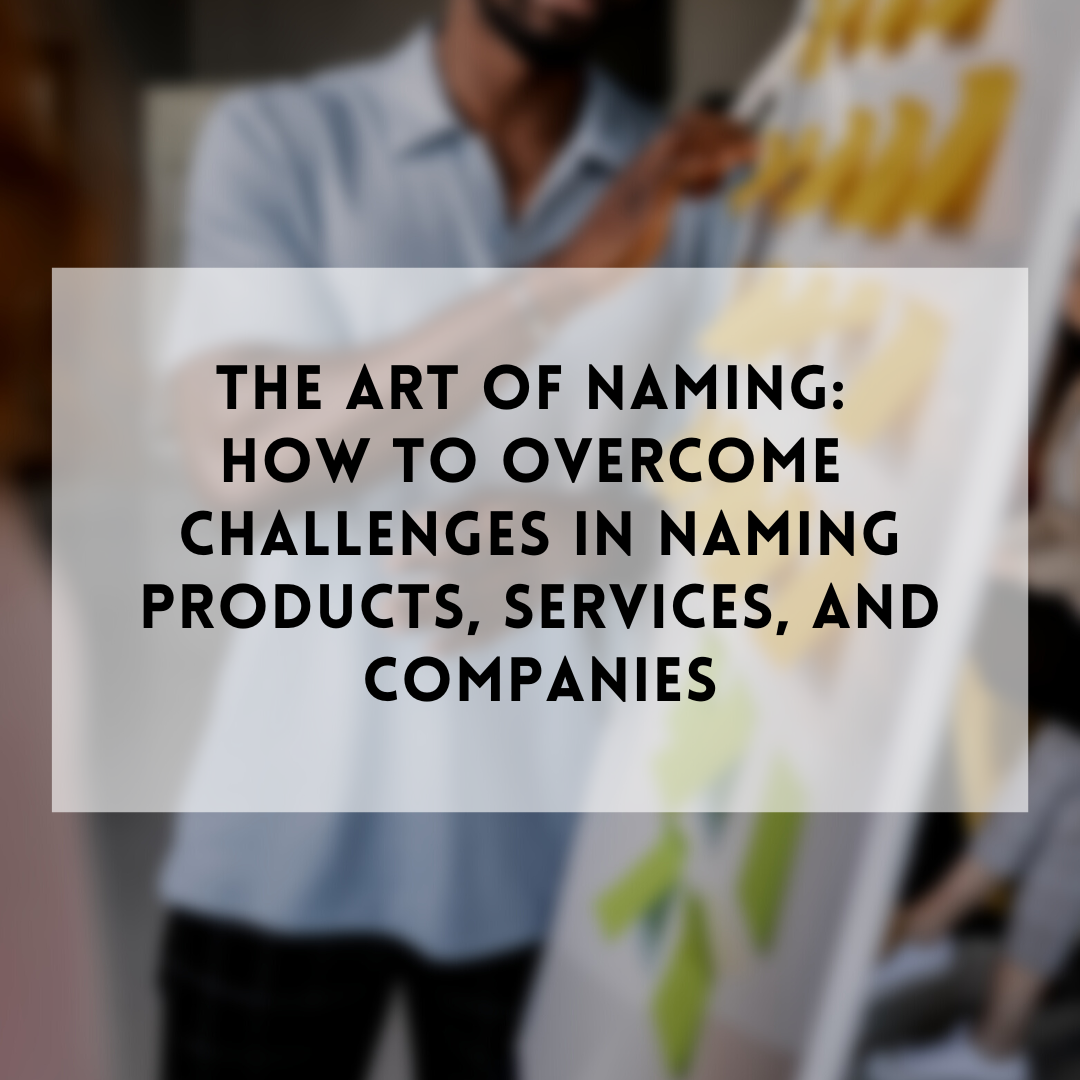The art of naming: How to overcome challenges in naming products, services, and companies
How long does it take to name a baby? And how do you go about exploring options and choosing a winning name?
The process is deeply personal, and for good reason.
But naming a business, product, or service shouldn’t feel so personal, should it?
The thing is, it sometimes does, especially when working with founders and creators who feel deep ownership and connection to their baby business.
If your team has been spinning out on naming for many weeks or even months, I’m guessing at least one of these factors is at play:
The decision feels personal and emotional to one or many people
Team members are having very different reactions to word choice or potential names because of the subjective nature of language
Conflicting opinions between team members is leading to a holding pattern
Lack of structure or designated time frame is allowing the team to overthink things
Feeling stuck is not a fun place to be, especially when a decision (or lack thereof) is holding up other areas of work and an ability to move forward. But it’s also something that can be overcome.
When I help teams through this process, I employ a few methods to get the group back on track, which you can borrow for your own work.
Check out these 7 methods to see what it looks like in practice:
1. Get grounded in where you are and how you got here
It’s helpful to take stock of the current situation to better understand the thinking that got you here. Do you already have a name? If so, how did you get it, and what’s not working about it? How do you know it’s not working?
Answering these questions is important because it sets the foundation for where you don’t want to go, and that’s just as helpful as exploring where you do want to go.
2. Get connected to your customer
Outline what you know about your target customer. What do you know about their sentiment about your company today? What language do they use to describe you?
Defining these characteristics can help you make informed decisions about what will resonate with your key targets.
3. Agree on foundational framing to work within
Do you have a fully formed brand guide? Is the whole team clear on the purpose of what you offer, who it’s for, and why it matters?
If not, I highly recommend lifting any or all of the exercises outlined in this brand sprint guide authored by my friend Jake. Orienting the team around foundational elements is important because it ensures your naming exploration will be aligned with the brand DNA.
4. Use a simple “This / Not That” exercise to talk about names in market today
Look at competitor or adjacent company/product/service names. Then, have each participant share a few things that they are loving about those names (“this”), as well as the things they’re not loving (“not that”).
This helps start the conversation about where you might head with a name, along with areas you definitely want to avoid.
5. Be open to new ideas outside of the realm of past exploration
Push the team to get outside of their comfort zone, be silly, and build on one another's ideas.
To do this, I recommend you play with a few rounds of rapid idea generation. I like to have teams work independently for 5 mins before sharing their ideas with the group. From there, help the team build on one another's ideas.
Once you have a solid number of options to work with, cluster and highlight themes, or facilitate a round of voting to see which ideas are resonating with the team.
6. Designate a decider
In the end, you’ll still need a designated decider who has been entrusted with the power to make the call on the final name (and it’s not you as the facilitator).
This person could be a founder or someone with a C-level title. The team might wonder why they’re included in this work if, ultimately, the decider gets to make the final call. But, speaking from experience, a leader who explores and collaborates with the team will land on something much better than if they were to go it alone.
7. Invite a neutral party into the conversation
It can be really hard for people to let go of the emotional aspect of something when they’re so close to it. That’s why inviting a neutral party into the conversation can be a powerful way to introduce objectivity.
Choose someone who doesn’t work closely with the product/brand/service, either from elsewhere within the org, or an external third party.
These methods are instrumental to making informed decisions, but so is the timeframe in which you make it.
Don’t let this exercise drag out for months. Instead, identify a dedicated team and go heads down on the endeavor for a predetermined period of time. This helps mitigate overthinking and overanalyzing, which is a true threat to designing a way forward.
In fact, the very reason I facilitate one-day naming sprints is because it balances exploration with decision making (here’s an awesome example of how these tools helped my team rename a company in a day).
By fostering collaboration, neutralizing politics, and guiding groups into alignment, the end result is something the whole team feels invested in.
